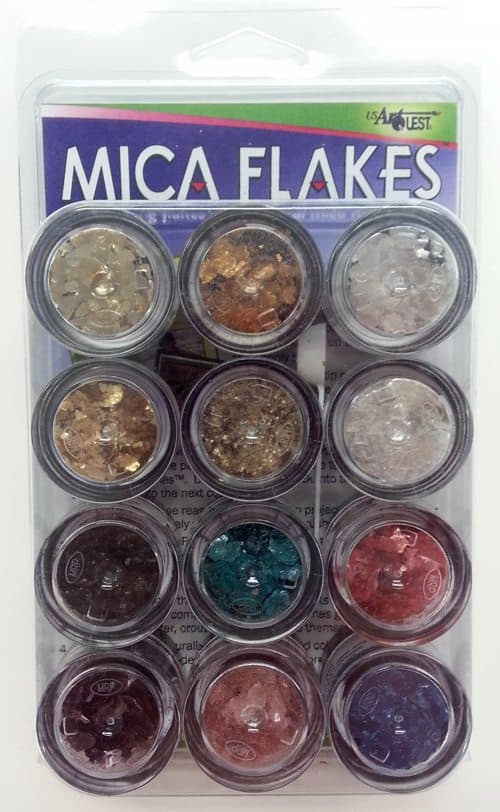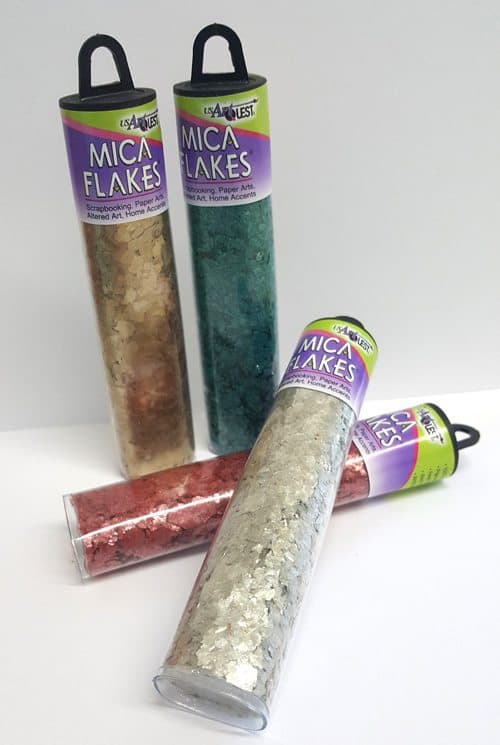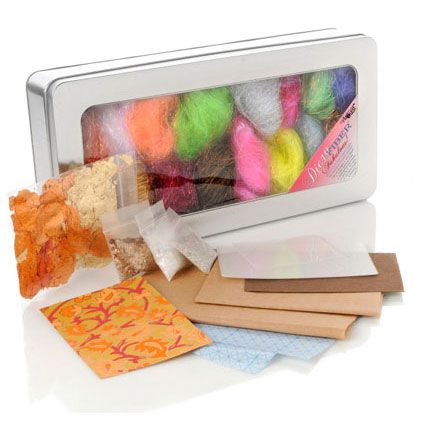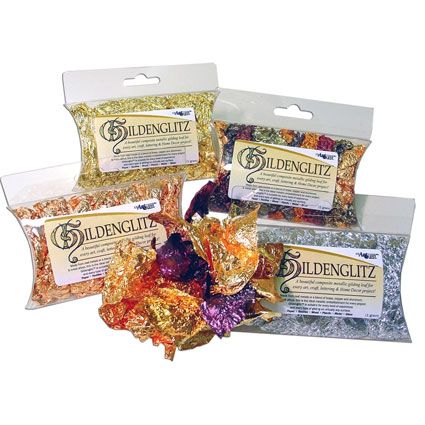There’s always something new to learn, and learning the ‘lingo’ is essential when growing as an artisan. If you discover we have missed an important term, please email [email protected], and I’ll add it in. In the meantime, enjoy using our glossary of creative terms and it will have you sounding like a pro in no time. — Sue.
Glossary of Art Terms
Acid-free – A material when tested using a surface probe or cold extraction is found to have a pH of 7.0 to 9.5, indicating a material contains no mobile or available acid ions for a chemical reaction. Over time materials may naturally become acidic by absorption through the atmosphere, or by coming in contact with acidic materials.
Acid Reducer – Any product that when applied or added to a material neutralizes acid content.
Acrylic – A fast-drying paint containing pigment suspended in an acrylic polymer emulsion, exhibiting varying levels of opacity or translucency. Acrylics are water-soluble when wet, become an insoluble film when dry. Acrylic paints may be made to be satin, high gloss or matte finishes. Pigment amounts and particle size can alter the paint sheen. Likewise, matting agents can be added to dull the finish. Topcoats or varnishes may also be applied to alter sheen.
Water or mild solvents do not re-solubilize drying or dried acrylic paint, although isopropyl alcohol can lift some fresh paint films. Toluene and acetone can remove paint films, but they do not lift paint stains very well and are not selective, not to mention, using toluene and acetone are hazardous materials. The use of a solvent to remove paint will result in removal of all of the paint layers, acrylic gesso, etc.
Only a proper, artist-grade acrylic-gesso should be used to prime canvas in preparation for painting with acrylic. It is important to avoid adding non-stable or non-archival elements to the gesso upon application. Acrylic will not form a stable paint film if it has been thinned with more than 30% water content. However, the viscosity of acrylic can successfully be reduced by using suitable extenders that maintain the integrity of the paint film. There are retarders to prolong drying and workability time and a flow release to increase color blending ability.
Forms: Bottle – A light viscosity acrylic paint (about like light cream) that may be used directly by pouring or brush, or mixed with water or other mediums for thinner more transparent painting effects. (USAQ offers acrylic paint in a bottle.)
Tubed – A medium viscosity acrylic paint (about like toothpaste) that may be mixed with water or other mediums for thinning to paint with a brush, or used directly with a palette knife.
Jar – A thick viscosity acrylic paint (about like spackle compound) that may be mixed with water or other mediums for thinning to paint with a brush, or used directly with a palette knife.
Additive – Any substance added to another substance to alter or improve the properties.
Adhesive – Any compound that can stick two surfaces together. Adhesives come in a myriad of forms including liquid, solid, cement and paste. (USAQ offers several adhesives, notably PPA, 101 Artist Cements, Great Tape and Duo.)
Archival – 1. A non-technical term that suggests a material is permanent, durable, or chemically stable. 2. A material that can safely be used for preservation purposes, although there are no quantifiable standards that describe how long an archivally sound material will last.
Assemblage – A modern art term describing objects collected and assembled together to create a harmonious work of art. Generally, the 3-dimensional components are preformed, not made by the artist, and not originally intended to be used as an art material.
ATG – An economical pressure-sensitive dry adhesive. ATG, applied by hand or mechanically dispensed, is evenly distributed from a liner-paper. (USAQ’s ‘Great Tape’ is an ATG.)
Binder – A substance used to bind or cement the pigment particles together in paintmaking.
Bleed – 1.The migration of ink, paint or adhesive through or across paper. This process may occur immediately upon application or over time. 2. A printer’s term used to refer to color (ink, paint, or paper) that runs all the way to the edge of a trimmed page.
Brilliance – A subjective term referring to the cleanness or lack of a muddy or dirty tone in pigmented coatings.
Bronze – An alloy of copper and tin and sometimes other elements; also any copper-base alloy containing other elements in place of tin.
Bronzing – A subjective name given to a metal-like surface using nonmetallic colored materials.
Caking – The settling of pigment particles into a near-solid mass, which is not easily re-dispersed by stirring.
Caliper (Paper Thickness) – The average thickness of a single sheet paper as determined by measuring the thickness of different sheets and averaging the results.
Coagulate – The thickening or congealing of fluid.
Cockle – The formation of ripples, bubbling or warped areas when paper is wet. Cockling is caused by uneven moisture uptake or uneven tension during drying.
Cold Pressed – Cold-pressed watercolor paper has a lightly textured surface. Texturally, it is somewhere in between rough and hot-pressed paper and often preferred by watercolor artists for its’ ideal absorbency.
Collage – An artistic collage work may include newspaper clippings, ribbons, bits of colored or hand-made papers, portions of other artwork, photographs, and such, glued to a piece of paper or canvas. Derived from the French “coller” meaning “glue”, this term was coined by both Georges Braque and Pablo Picasso in the beginning of the 20th century when collage became a distinctive part of modern art. (For more on collage techniques, USAQ offers both videos and books on this subject.)
Colloidal dispersion – A heterogeneous mixture where very small particles of one substance are distributed evenly throughout another substance.
Color – A visual experience that can be described as having quantifiable dimensions of hue, saturation, and brightness or lightness, and does not include aspects of size, shape, texture, or movement. Color is immediate, drawing attention. A sharp contrast in color draws even more.
Colorant – Any substance that imparts color to another material or mixture. Colorants may be dyes or pigments.
Colorfast – also known as Lightfast – A term used to describe an object or paint that resists the harmful UV rays of light, acid and heat. A colorfast item is not impervious, but resists all three.
Composition – Composition refers to how the artist organizes the creative elements, colors and shapes into a whole, one that is satisfying to the viewer. Creative variables such as balance, color, and texture are all subjective aesthetic considerations, that when combined form an image that is pleasing to the eye. The main element of composition is balance and the shape of the unused (or negative) space, as well as element (positive image) proportion. Composition may be balanced and symmetrical or off-center or in asymmetrical balance.
Consistency – A harmonious uniformity and ‘feel’ of a substance, combining both the viscosity and rheology.
Crackle Medium – Any medium that is made to alter the surface of paper or paint, by creating fissures, crazing and crackling, thus giving it an aged appearance. (USAQ offers this product named 101 Craze & Crackle.)
Craze – A small defect resembling an uneven tear in an acrylic film. Crazing may occur when pourable or sprayed products are applied too thickly in a single coat. Crazing may also result from paint skinning as it begins to dry, and shrinking while the under-layers or center remains liquid. Crazes may also occur from excessive or sudden hot or cold temperatures.
Decoupage – A decorative paperart technique using carefully cut figurative paper illustrations. The cut pieces are then pasted onto nearly any surface. Made popular in Victorian times, young women would decoupage everything from floor screens to furniture, and from boxes to album covers.
Defoamer – An additive used to reduce foam in a paint or coating.
Dispersion – Process of dispersing a dry powder into a liquid substance in su
ch a way that the individual particles of the powder become evenly distributed throughout the entire liquid.Drawdown – A layer of paint ‘drawn’ by use of a drawdown bar to evaluate the characteristics of the paint.
Dry Brushing – The technique of filling a brush with paint, removing virtually all of it, and then brushing the nearly dry brush across paper to alter and subdue color, or to enhance protrusions, wrinkles and paper embossed areas.
Dye – A water or solvent soluble substance made to color ink, paper, and textiles. Dye colors are less stable over a long period than pigment colors, however after application and protected properly, they have relatively long life and allow a greater color variety. Dyes do not scatter light, but absorb wavelengths and transmits others.
Embossing Powder – An acrylic or resin-based fine-grained substance that will melt when heat is applied to it. When cooled the powder leaves a raised design.
Emulsifier – The process of dispersing one liquid in another (the liquids being mutually insoluble or sparingly soluble in each other). An emulsifier (also known as an emulgent) is a substance which stabilizes an emulsion, frequently a surfactant.
Emulsion – A mixture of two immiscible (unblendable) substances.
Fade proof or Fade resistant – A color that does not fade or resists change, when stored away from a light source or a variety of other environmental factors.
Film – A thin continuous or unified coating.
Film Formation – The result of an ongoing drying process, whereby a liquid substance, usually a group of polymers, align into a stable structure.
Finish – A term denoting the condition of a paper surface. A high finish refers to a smooth, hard, surface. A low finish refers to a relatively rough, toothy surface.
Fish Eye – The crawling of wet paint into a recognized pattern resembling small “dimples” or “fish eyes”.
Fixative – A substance, usually an aerosol spray, that aids in preventing fading or smudging of art materials such as chalks, pastels, and pencil.
Flow – The movement of a coating during and after application and before the film is formed.
Foxing – Brown spots of what appears to be mildew in the paper’s surface, is actually fungus. Penetrating the paper, they cannot be removed by erasing. Occasionally it may be removed using bleaching techniques.
Frottage – In art, a surrealist and “automatic” method of creative production developed by Max Ernst. In frottage the artist takes a pencil or other drawing tool and makes a “rubbing” over a textured surface.
Gel – A somewhat elastic semisolid or gelatinous substance composed of matter in a colloidal state that does not dissolve.
Gesso – An opaque chalk-like base used to prepare surfaces for painting, lettering, and gilding.
Glaze – A layer of paint, thinned with a medium, so as to become somewhat transparent. A glaze changes the color cast or texture (gloss or matte, for instance) of the surface. Drying time depends on the amount of medium used in the glaze; a higher ratio of medium to paint produces a very thin, transparent glaze. Substances may be added to professional glazes which increase the ‘open’ time. (USAQ offers a glazing product called Perfect Glazes.)
Gouache – Opaque watercolor containing a colored pigment, binder, and an opaque filler. (USAQ offers a gouache watercolor called MicaColor – Pastelles)
Grain – The direction in which most fibers in paper run, as a result of the papermaking process. Paper tears more easily with the grain than against the grain. For some paper varieties, folds made parallel to the grain causing less damage, and creating smoother, less bulky folds.
Grind – To reduce the pigment particle size mechanically.
Grinding Slab – A flat piece, usually of glass or stone, on which color is ground from a coarse to a finely divided state, frequently with the medium that is to blend it as a paint.
Gum Arabic – 1. A water-soluble gum obtained from the acacia tree used in lithographic processes. 2. An acid-free powder or liquid binder used to make watercolors. (USAQ offers this medium called Gum Arabic.)
Hot Pressed Paper – A smooth, glazed paper surface produced by rolling and pressing a finished sheet of paper through hot metal cylinders.
Hydrophilic – A substance which absorbs or exhibits an affinity for water.
Hydrophobic – A substance which does not absorb or exhibit affinity for water.
Ink – A fluid, semi-fluid, gel or paste containing pigments or dyes, and is used in pens, brushes, and pads for drawing, writing, stamping, and printing. Inks for each of these purposes differ from one another in their composition and physical properties.
Inorganic – Compounds that generally do not contain carbon.
Leaf – A very thin, fragile foil or hammered precious metal, or metal-composite material, which is applied by using a tacky adhesive or double-stick tape, or sheets. It is sold in a range of types, colors, sizes and styles. Also known as ‘gilding leaf’. (USAQ offers this product in 6 colors called Gildenglitz.)
Leveling – The ability of an applied wet substance to flow out to dry to a smooth film without brush marks.
Lignin – One of the three main constituents of wood, along with cellulose and hemi-cellulose. Lignin acts as the cementing agent in wood, binding the cellulose fibers together.
Lightfast – Referring to a material’s ability to withstand color change from light energy for a specified amount of time. Colorants are described as lightfast for a specified time exposed to a known amount of ultraviolet light exposure. See ASTM Lightfastness Ratings.
Lightfastness – 1. The relative degree of change or lack of change in color of materials exposed to the same amount and character of light. 2. A colored material that resists fading caused by natural and artificial lighting.
Light stability – A material’s ability to resist change when exposed to light. Materials that are not light stable can become brittle, discolored, and react adversely with adjacent materials, such as adhering to each other, becoming sticky, stretchy or pliable, bleed through or stain the another item.
Medium – In paints, the continuous phase in which the pigment is dispersed; synonymous with vehicle.
Mica – A transparent, flaky mineral with excellent heat-resistance, characterized by the formation of thin-layered sheets and ranges in color from colorless to black, coppery, brown, gold and silver. When attached to a pigment, it produces a wide range of iridescence, pearlescence or metallic dry pigments. Dry pigments are extensively used in many industries, such as paint making. Colored mica particles and flakes are used as embellishments. Larger pieces called block (USAQ calls Mica Tiles ©), are predominately used for window, water and encapsulation techniques, and may be shaped with scissors, or even die-cut. (USAQ offers mica products called Mica Tiles, Mica Flakes, Mica D’Lights, Mica Shapes, MicaCraft, and MicaColor Watercolors.)
Migration – The movement of chemicals (such as acids, plastics, paint or inks) from one item to another. Migration can occur without direct physical contact, such as the migration of acids from one degrading paper to another material or photograph.
Miscible – Relating to two or more substances, such as water and alcohol that can be mixed together or can dissolve into one another in any proportion without separating.
Mixture – A heterogeneous association of materials that cannot be represented by a chemical formula and that does not undergo chemical change as a result of interaction among the mixed materials.
Montage – A composite art piece made by cutting or tearing photos then adhering them together to produce a homogenous whole.
Open Time – The length of time a coating (paint or adhesive) remains wet enough to effectively work the brush.
Opaque – 1. An ability of a coating to hide or cover, is known as opacity. 2. The inability to allow any light to pass through a surface is called opaque. Opaque is the opposite of transparent.
Organic – Designation of any chemical compound containing carbon.
Paint – A substance made of pigment and binder. Pigment provides color to paint, and in its raw form it is ground. Paint may come in many forms – dry powder, dry cake, liquid and paste.
Pantone – A color matching system used in many industries to describe and reproduce a specific color; first introduced in the early 1960’s.
Permanence – The resistance to any object or material to change with age or exposure to deleterious conditions.
Permanent – A term used to describe how long a media or substrate may potentially last. A very vague descriptor unless there is testing data to indicate what is meant by “permanent”. Example: Permanent Marker.
pH – The acidity (below a neutral 7.0 pH ) or alkalinity (above a neutral 7.0 pH) of a material. Acrylic paints must be alkaline in order to maintain good working properties and shelf stability. Acidic materials should not come in contact with natural fibers such as cotton, because they speed up the degradation of the fibers.
Pigment – A finely ground, natural or synthetic, inorganic or organic, insoluble dispersed particle which, when dispersed in a liquid vehicle makes paint, and may provide, in addition to color, many of the essential properties of paint including opacity, hardness, durability and corrosion resistance.
Pigment Load – The amount of pigment in paint, compared to the amount of binder and other ingredients. Pigment Load may also refer to the maximum amount of pigments or other solids that can be added to a paint and still form a strong, stable film. Each pigment varies greatly and therefore will have its own unique maximum pigment load.
Pigment to Binder Ratio – The ratio of pigment to binder solids in paint.
Pinholes – The film defect characterized by small pore-like flaws in a coating which extend entirely through the applied film and have the general appearance of miniscule pinholes.
Polymer – The substance, the molecules of which consist of one or more structural units repeated any number of times.
Polymerization – The chemical reaction in which two or more small molecules (monomers) combine to form large molecules that contain repeating structural units.
Repositionable Adhesive – A pressure-sensitive adhesive with a low tack characteristic, leaving a minimal residue, staining, or damage upon the substrate when removed. (USAQ offers two repositionable adhesives – dry Great Tape, and wet Duo)
Resist – A technique that preserves the white area of cardstock.
Reversible Adhesive – An adhesive that can be undone.
Resin – A general term applied to a wide variety of transparent and fusible substances, which may be natural or synthetic.
Retarder – A component added to a substance to slow down a chemical or physical change.
Rheology -T e flow characteristics of a product; described as either ‘long and flowing’ or ‘short and stiff’.
Rheology Modifier – An additive used generally for changing the viscosity or flow of paints.
Setting Up – The conversion of liquid paint during storage to a gel-like condition. The process is usually reversible by agitation and thinning.
Shade – A mixture of a color with black.
Solution – A homogeneous mixture of two or more elements or compounds.
Solvent – A substance (usually a liquid) capable of dissolving one or more other substances. For example, the most common solvent is water. Paint remover and alcohol are also just 2 of many solvents.
Surface Tension – The property arising from molecular forces of the surface film of all liquids.
Surfactant – An agent or additive which reduces the surface tension, thereby improving wetting and aiding in the dispersion pigments.
Syneresis – The spontaneous appearance of a transparent liquid over an opaque liquid paint during storage.
Tape – A material made of one of numerous materials, such as cellophane, double-sided, dry, mounting, foam, foil, plastic and masking tapes, all that fastens two items together or may be used for creative techniques.
Thickener – Any material used to thicken a liquid (increase viscosity).
Thixotropic – An adjective describing a full-bodied material which undergoes a reduction in viscosity when shaken or stirred, thereby becoming the original full-bodied condition on standing.
Tint – A mixture of a color with white.
Tinting Strength – The measure of the effectiveness with which a quantity of colorant alters the color of a material.
Tooth – A very slight surface texture, caused by the pressure of the certain rollers during manufacturing of paper. Tooth plays an important roll when using pastels or chalk, as it ‘grabs’ and holds the particles.
Translucent – Between transparent and opaque; translucent materials can be seen through, but not with clarity.
UV light (ultraviolet light) – Radiation present in sunlight, fluorescent light, and to some degree incandescent light. UV light degrades the components of paper, photographs, inks, paints, and adhesives.
Vehicle – The liquid portion of paint, in which the pigment is dispersed, it is composed of binder and thinner.
Viscosity – The physical “thickness” of a product.
Viscous – Having relatively great viscosity.
Wash – A layer of color, often uniform in tone, applied across the paper with a brush or sponge.
Watercolor – A paint in which water is used as the vehicle for carrying the pigment from the brush to the paper. Cardmakers can enjoy a huge variety of types and hundreds of colors. Watercolor in tubes may be mixed with those on a palette or in a pan, and in conjunction with watercolor markers. Watercolors may be mixed with gouache and provide a base of color for pastels, pencils and markers.
Mica-based watercolor paints provide a sparkling feature and vary greatly from translucency and opacity. Gum Arabic, derived from acacia trees, acts as the binder and is resoluble even after drying. Good watercolors contain emulsifiers that aid in rewetting and viscosity, and aid in providing smooth color transitions.
Forms: Liquid – A watercolor solution able to be poured or brushed without requiring the addition of water. Often, liquid watercolors contain dyes which are not lightfast.
Pan Paint – A watercolor paint, poured and hardened in a palette, which may be re-wet to be used. (USAQ offers pan paint watercolor palettes, because mica settles and does not lend itself to tubing.)
Tube Paint – A tubed, viscous watercolor to be applied to a palette, and further wetted-out to be used.
Waterproof / resistant – A materials ability to resist change when in direct contact with water. This includes, but not limited to, softening, migration, swelling, bleeding, or dissolving. Water-soluble – A material that dissolves in water.


 Mica Flake Collection
Mica Flake Collection  Mica Flakes
Mica Flakes  Dicrofibers 'Fabulous' Kit
Dicrofibers 'Fabulous' Kit  Gildenglitz - Gilding Leaf
Gildenglitz - Gilding Leaf